Respiratory Protective Equipment (RPE) must be both adequate and suitable.
Adequate
It is right for the hazard and reduces exposure to the level required to protect the workers’ health.
Suitable
It is right for the worker, task and environment, such that the worker can work freely and without additional risks due to the RPE.
You should only select and use RPE:
- where an inhalation exposure risk remains after you have put in place other reasonable controls (residual risk)
- while you are putting in place other control measures (interim measures)
- for emergency work or temporary failure of controls where other means of control are not reasonably practicable
- for short-term or infrequent exposure, such as during minor maintenance work, where you decide that other controls at the source of the exposure are not reasonably practicable.
The selection of RPE will usually require advice from a competent person. When selecting RPE consider:
- the type of RPE that will best protect the wearer against the hazardous substance
- whether the proposed RPE is suitable for the form of the contaminant
- e.g. liquid, gas or solid
- the suitability of the RPE for the work
- light or heavy work, short or long duration, confined space, ventilation
- some respirators, such as powered air purifying respirators, may act as an ignition source for flammable or explosive vapours, gases and dusts
- the length of time the RPE will be worn by the worker and the physical demands of the task being performed with the RPE
- e.g. wearing tight-fitting respirators (non-powered) for more than an hour or during hard physical work may become uncomfortable and result in a person removing the respirator while still in a contaminated area
- if the RPE needs to be worn for extended periods, which RPE options provides reasonable comfort
- the needs of each worker
- e.g. correct size and fit, compatibility with other PPE the worker needs to wear (some safety glasses may interfere with the fit of the respirator)
- the control measures recommended by the Safety Data Sheet (SDS) for the substance the worker is working with
- the type of RPE recommended by the SDS
- other risks from the work task
- e.g. a half-face disposable respirator with an exhalation valve may not be appropriate where there is a risk of splashes
- vision and communication requirements
- the working conditions particularly if working in a hot and humid work environment
- e.g. powered respirators may be more appropriate where heat stress is a risk.
Knowing the level of exposure in the workplace is an important factor in choosing the correct type of RPE and protection factor (the degree of protection that the RPE provides). In some work situations it is possible for the level of harmful airborne contaminants to exceed the capability of the RPE to protect the worker. The more contaminated the workplace air, the more protective the RPE needs to be.
There are two important factors to consider when selecting RPE:
- the level of protection given by the RPE is suitable for the level of air contamination, and
- the filter in the RPE is suitable for the type of airborne contaminants in the workplace.
RPE to be worn in certain types of situations will need special consideration. These may include:
- working with biological hazards such as micro-organisms
- where the level of oxygen may be low, such as in a confined space
- where the level of airborne contaminants is immediately dangerous to life or health
- where the level of airborne contaminants is unknown
- emergency escape
- where there is a risk of breathing in carbon monoxide
- flammable or explosive atmospheres.
You need to ensure that the RPE you select can protect the worker from the hazardous substance in the air around them. Your decision will depend on the amount in the air and its form (e.g. particles, vapour). There are various types of respirator and breathing apparatus available. The protection they offer will be determined by a number of things, including the protection factor. In simple terms, this is the ratio of hazardous substance outside the RPE to the amount inside the RPE.
Each respirator type and class is categorised by an Assigned Protection Factor (APF). The APF is a number rating that indicates how much protection that respirator is capable of providing. For example, disposable P2/N95 respirators have an APF of 10, meaning they reduce the workers exposure to the airborne contaminant/s by at least a factor of 10 if used properly.
A safety equipment supplier, occupational hygienist or consultant may be able to help select the most suitable RPE for your workplace.
RPE used at work should comply with Australian Standard AS/NZS 1716:2012 Respiratory protective devices. Some RPE manufacturers or suppliers have selection charts that can help in selecting the correct type of respirator and filter.
Types of RPE
Surgical or patient care masks and nuisance dust masks do not protect the worker from airborne contaminants such as small particles, aerosols, gases or vapours. These masks protect the worker from splashes of large droplets of blood or body fluids only. Some nuisance dust masks look like respirators but usually have only one strap. In addition, these masks will not be marked with the Australian Standard AS/NZS 1716:2012 Respiratory protective devices.
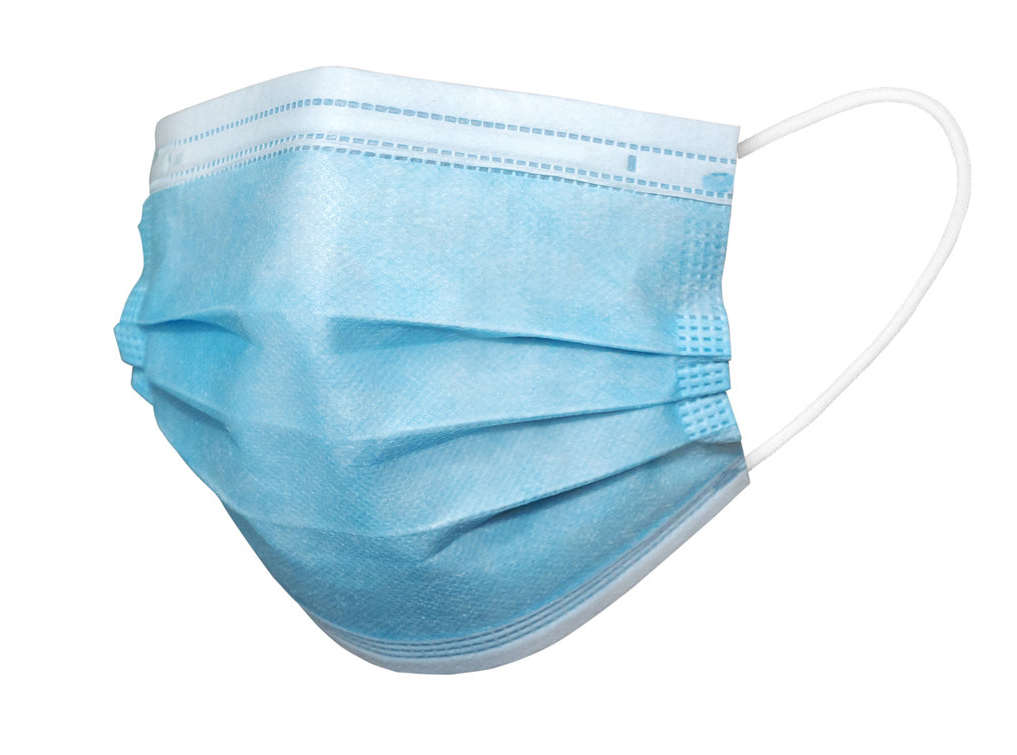
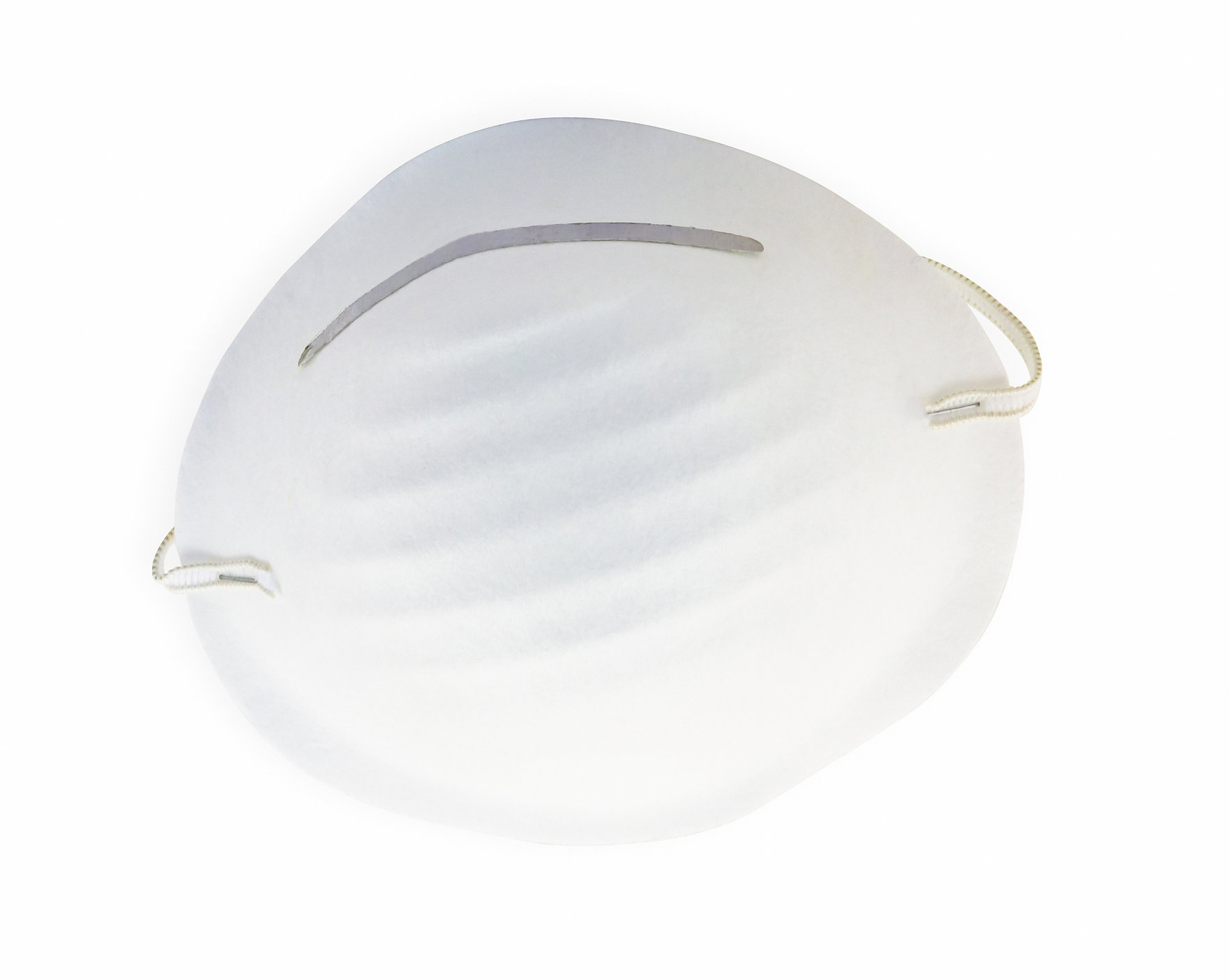
Respirators are available in a range of styles, comprising two main groups:
- tight-fitting facepieces – these rely on having a good seal with the workers face and available as both non-powered and powered respirators. A face fit test must be carried out to ensure the respirator can protect the worker.
- loose-fitting facepieces – these rely on enough clean air being provided to the worker to prevent contaminant leaking in e.g. hoods, helmets and visors.
Respirators that use filters to remove contaminants from the air, can be:
- disposable – designed for short term or one off use. They are only available to protect the worker from harmful particles such as dust, fumes, fibres and biological hazards such as bacteria or viruses
- reusable – available in half face and full face versions, with the worker able to choose the correct cartridge for protection from a variety of contaminants
- Powered Air Purifying Respirators (PAPRs) – contaminated air is forced by a powered fan through filters to provide purified air to the worker (positive pressure).
Common types of RPE
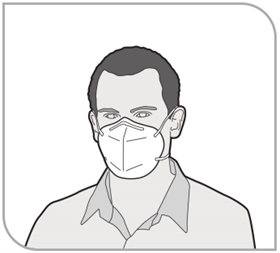
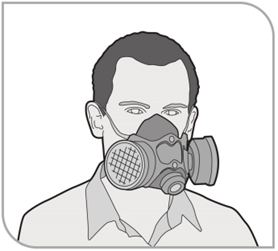
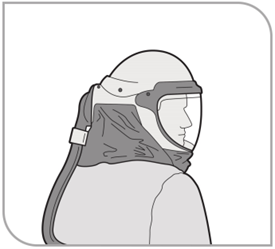
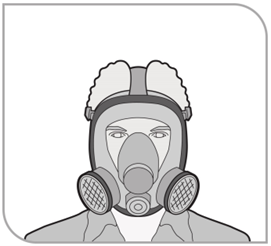
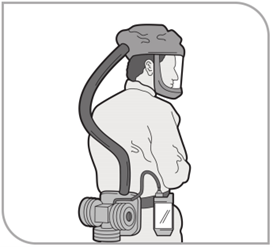
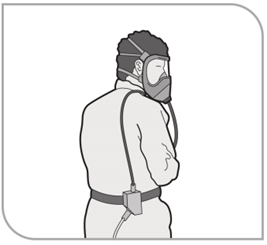
Source: Australian Standard AS/NZS 1716:2012 Respiratory protective devices.
Particulate filters
Particulate filters only protect against solid and liquid particles including micro-organisms. They do not protect against gases or vapours such as solvent vapour.
Particle filters are classified according to their efficiency. The filter (or the facepiece it is built into) will be marked with the letter P (for particle) and a number to indicate efficiency, or the level of protection provided:
- P1 = Low efficiency - filters about 80% of particles smaller than 2 μm (micrometres).
- P2 = Medium efficiency - filters about 94% of particles smaller than 0.5 μm.
- P3 = High efficiency - filters about 99.95% of particles smaller than 0.5 μm. (However, P3 protection can only be achieved if the P3 filter is used in a full-face respirator).
P2 respirators are commonly used across a range of industries including the healthcare sector, mining, construction, demolition, and hazardous materials removal. These devices are designed to protect the worker from inhalable and respirable airborne particles which may pose significant health risks from exposure e.g. bushfire smoke, respirable dust, crystalline silica, asbestos and airborne pathogens.
For further information on P2 type respirators, go to: A Guide to Buying P2, or Equivalent, Respirators for use in the Australian & New Zealand Work Environment.
Gas and vapour filters
These filters are designed to protect against gases or vapours as specified by the manufacturer.
Gas/vapour filters are classified according to their capacity and the type of substance they can be used against.
Their capacity refers to how much of the specified contaminant they can hold:
- Class 1/AUS = Low capacity.
- Class 2 = Medium capacity.
- Class 3 = High capacity.
Filters for gases and vapours are identified with letters and colours to indicate the type of chemical it will protect against e.g. a filter that will protect against ammonia is marked with K.
Gas and vapour filters do not protect against particles.
Combined particulate and gas/vapour filters
There is no one type of filter that provides protection from all contaminants. However, some filters may give combined protection against a number of contaminants such as particles and gases.
Australian Standards
RPE used at workplaces in Australia should comply with Australian Standard AS/NZS 1716:2012 Respiratory protective devices.
| Filter | Examples of contaminants / uses |
|---|---|
| Type A – organic vapours | Solvents (with boiling point above 65°C) |
| Type B AUS or B1 – acid gases | Chlorine / sterilisation of water, chemical manufacture, hydrogen chloride / chlorinated organic chemical manufacture, steel pickling |
| Type B2 and B3 – acid gases and hydrogen cyanide (HCN) | Plastics manufacture, gold ore refining, HCN fumigation |
| Type E – sulphur dioxide (SO₂) | SO₂/casting of metals, bleach manufacture, manufacture of sulphuric acid, fertiliser manufacture, metal cleaning, petroleum refining |
| Type G – agriculture chemicals | Low vapour pressure (below 1.3 Pa at 25°C) organic vapours, pesticide spraying, mixing, manufacture |
| Type K – Ammonia (NH₃) | NH₃/refrigeration, manufacture of fertilisers, explosives, plastics, low boiling point amines/chemical manufacture |
| Type AX - Low boiling point organic compounds (below 65°C) | As specified by the manufacturer (e.g. dimethyl ether, vinyl chloride) |
| Type NO - Oxides of nitrogen | Oxides of nitrogen |
| Type Hg – Mercury | Metallic mercury/chemical industry, inorganic mercury compounds |
| Type MB - Methyl bromide | Fumigation |
| Other types | For use against specific chemicals not falling in the above type description as specified by the manufacturer (e.g. hydrogen fluoride) |
Respirator Selection Tables (Positive and Negative pressure respirators)
These tables show the minimum respirators required based on the level of air contamination.
Refer to AS/NZS1715:2009 Selection, use and maintenance of respiratory protective equipment for further information on the selection of suitable RPE based on the required minimum protection factor.
| Air contamination level | Powered air (PAPR) | Air-hose | Air-line | SCBA | ||||
|---|---|---|---|---|---|---|---|---|
| Particles | Gas/Vapour | Particles | Gas/Vapour | Particles | Gas/Vapour | Particles | Gas/Vapour |
| Up to 10x WES | P1* |
Class AUS (1) Class 1 (1) Class 2 (1) | X | X | X | X | X | X |
| Up to 50x WES | P2 | Class 2 (2) | X | X | X | X | X | X |
| Up to 100x WES | P3 | Class 2 (2) | X | X | X | X | X | X |
| Unknown level | P3 | X | Yes | Yes | Yes | Yes | Yes | Yes |
| Oxygen level of less than 19% | X | Yes | Yes | Yes | Yes | Yes | Yes | |
*P1 filters not suitable for particles produced by hot processes (e.g. soldering and welding).
Note 1 – class AUS and class 1 are not suitable where maximum gas/vapour concentration is over 1,000 parts million
Note 2 – Class 2 filters are not suitable where maximum gas/vapour concentration is over 5,000 parts per million.
| Air contamination Level | Half-face disposable | Half-face reusable | Full-face | |||
|---|---|---|---|---|---|---|
| Particles | Gas/Vapour | Particles | Gas/Vapour | Particles | Gas/Vapour | |
| Up to 10x WES |
P1* P2 |
Class AUS (1) Class 1 (1) Class 2 (1) Class 3 (1) |
P1* P2 P3 |
Class AUS (1) Class 1 (1) Class 2 (1) Class 3 (1) |
P1* P2 |
Class AUS (1) Class 1 (1) Class 2 (1) |
| Up to 50x WES | X | X | X | X | P2 |
Class AUS (1) Class 1 (2) |
| Up to 100x WES | X | X | X | X | P3 |
Class 2 (2) Class 3 |
| Over 100x WES | X | X | X | X | X | X |
| Unknown level | X | X | X | X | X | X |
| Oxygen level of less than 19% | X | X | X | X | X | X |
*P1 filters not suitable for particles produced by hot processes (e.g. soldering and welding).
Note 1–Class AUS and Class 1 are not suitable where maximum gas/vapour concentration is over 1,000 parts per million.
Note 2–Class 2 filters are not suitable where maximum gas/vapour concentration is over 5000 parts per million.




